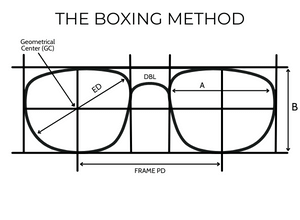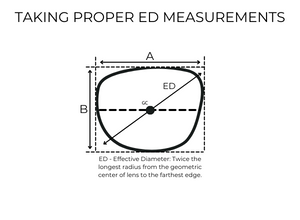How To Improve Thickness And Cut-Out Issues For Prescription Lenses

To better assist our customers and improve thickness and cut-out, we are expanding our database to begin storing frame information, including the shape and measurements of each frame. This is a brand new tool in our battle against thick lenses and cut-out issues.
With uncut jobs, it is the information you give us that most often drives the thickness of the lens and if it will cut out or not.
Step One
The fastest and most accurate way to help us help you with proper thickness and cut out on your uncut lenses is to give us the make and model of the frame. With our database expanding, we have been able to store thousands of frame tracings.
- When placing the order, provide the frame name and model number in the "Frame Name" box. For example, Tura TE263 or Modern Jenny.
- Please include the A, B, and DBL measurements along with the base curve that is requested.
Because our database is still expanding and we want to store as much information as possible, we request that you also utilize our shape number feature. You can provide the shape number in the special instructions.
Step Two
With instances such as a patient's own frame, you may not be able to even see what type of frame it is. In this instance, follow the next step to get the best thickness and cut out.
- Utilize our shape number feature by selecting "uncut with shape number." Choose the option that most closely matches your frame.
- Triple-check your frame information by providing the A, B, DBL measurements, along with the requested base curve.
- The ED will be based upon the A and B measurements and the chosen shape.
Step Three
If you are unsure of the frame name and the shape is not available, use the boxing method to gather the most accurate frame measurements. In my experience, with cut-out issues, the ED is measured incorrectly.


ED stands for "effective diameter" which is determined by doubling the longest radius from the geometric center (GC) of the lens to the furthest edge.
To decrease any chance of delays, it is important to input the correct frame type. Some frames can be tricky when determining what type of frame it is. For example, an IC Berlin frame looks like a standard metal frame but it is considered a grooved frame. If you were to input this type of frame as a standard metal, depending on the RX, it may be too thin for you to groove.

